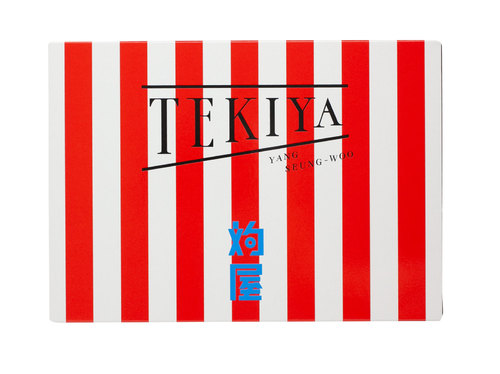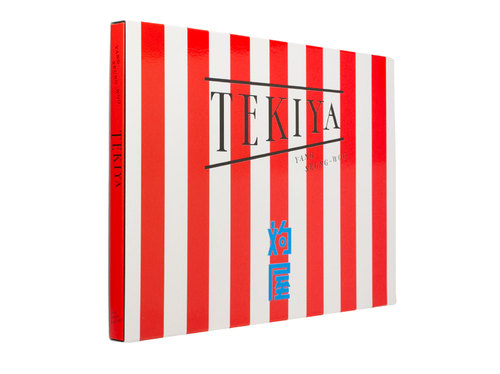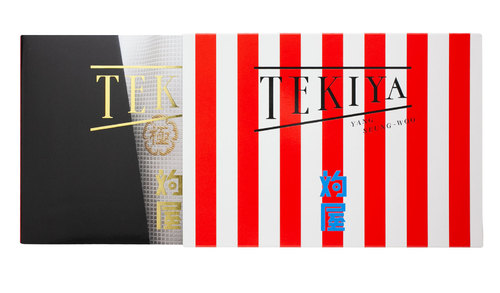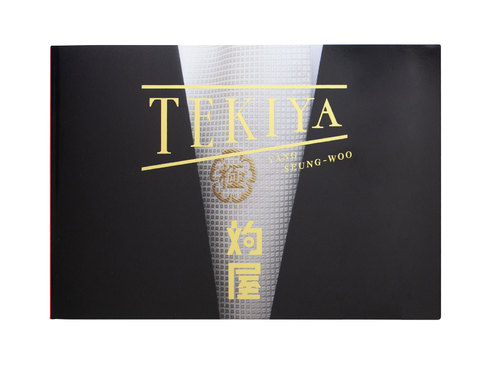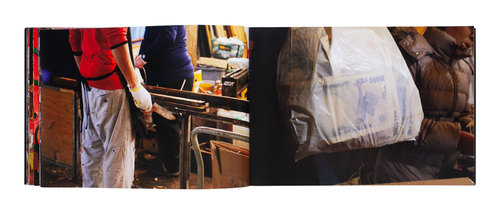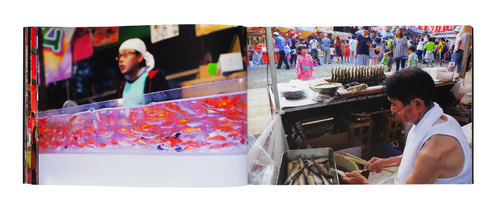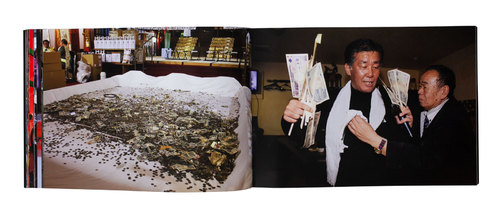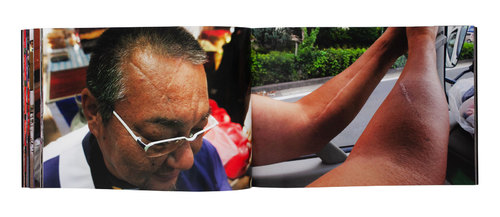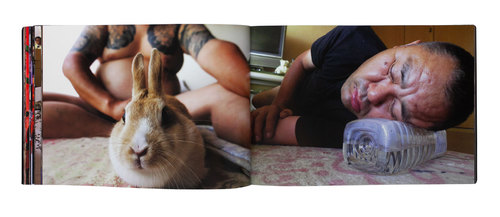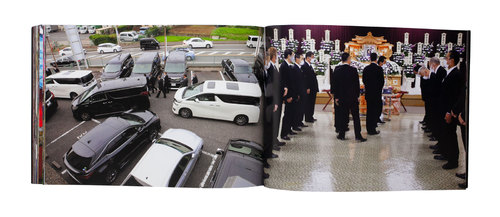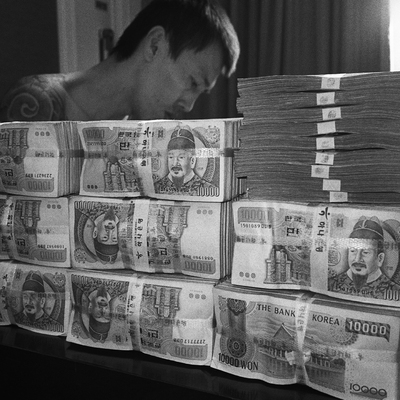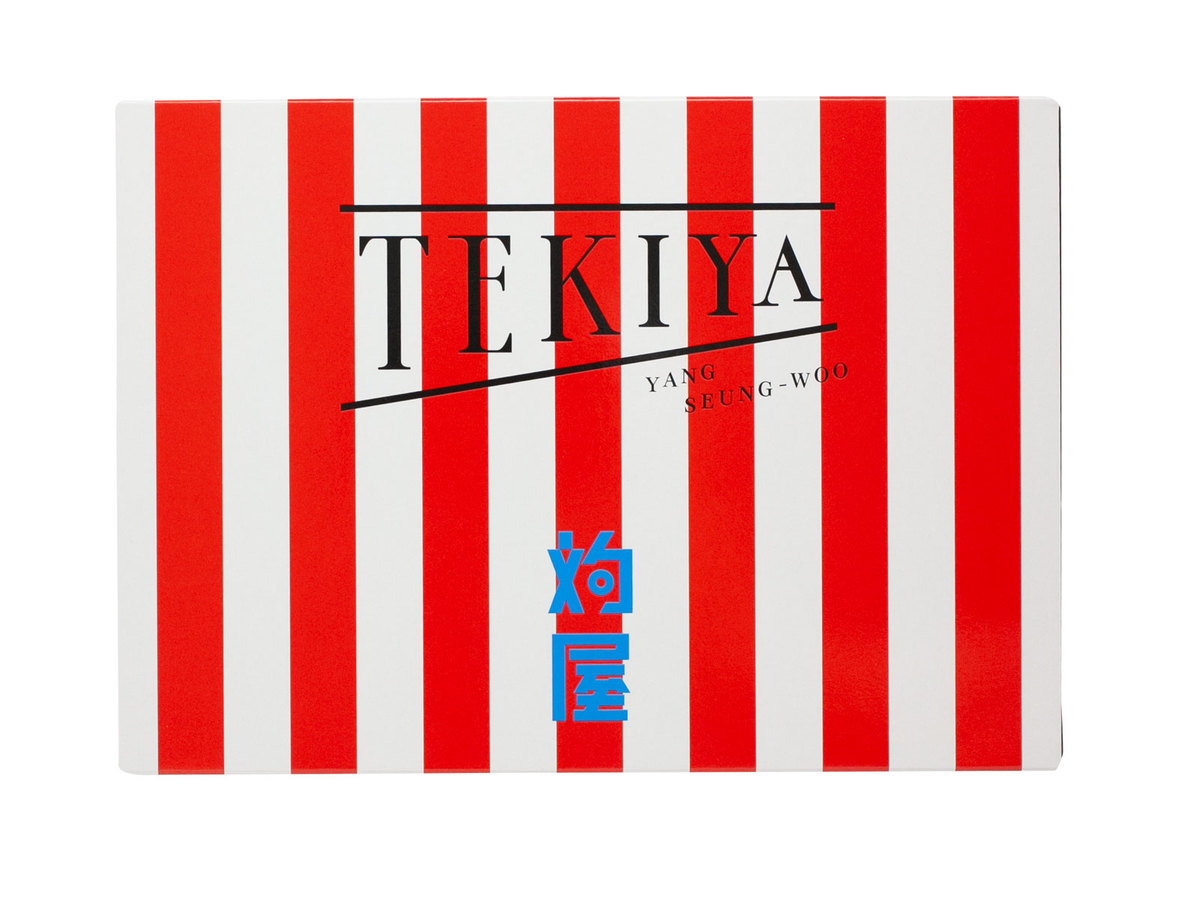
Signed, Recommended
TEKIYA
Yang Seung-Woo (“Shinjuku Lost Child”, “The Best Days”, “The Last Cabaret”) spent more than ten years photographing tekiya, the Japanese carnies traveling from festival to festival to sell typical foods and other goods from mobile stalls.
Struggling to make ends meet, Yang started working part-time as a tekiya himself, selling fried chicken at festivals. Despite the initial fun and the gaudy image, he writes in his afterword, “it’s a rough and physically demanding job” with long hours of hard work under harsh conditions. While the initial plan was to focus on the festivals, over the years Yang’s photography shifted towards the tekiya themselves. In his typical earnest, straight-forward style, Yang captures the upsides and downsides of the Japanese carnie lifestyle: the yakuza rites, the wads of cash, the radiating oldschool masculinity, the exhaustion, the roughness and nonluxuriousness of the day-to-day life, the excited atmosphere at the festivals.
With his unique background and his own experience of having worked as a tekiya shortly after coming to Japan, Yang is able to offer an unimitable look at the largely unknown world of the tekiya.
“Eleven years ago, not only was I struggling to afford to do photography but I was also short of money for food, as there were very few places I could work with my visa at that time. To find a part-time job to keep afloat, each day I would scan job sites for Korean students in Japan.
Ideally, I was hoping to find a part-time job that would also allow me to take photos, and I happened to find a job that was perfect. In short, the job was to “sell simple food at a food stall”. The daily wage was 15,000 yen.
My gut told me “this is it!” I called them.
They told me to meet them at the job site. It was to be a fireworks display. Ah, it’s the Tekiya! Bingo.
I had always been interested in the culture of Japanese festivals, and the groups of “Japanese-style” food stalls that were always there. And I had always wanted to photograph them someday.
On the first day, I fried and sold fried chicken for the first time in my life. They were all sold out before the festival began. I thought I had found my calling. (laughs)
But after that I gradually learned the reality of the job, and it was quite tough. It required long hours of work under harsh conditions, especially in summer and winter. Despite its gaudy image, it’s a rough and physically demanding job.
As for the photography, it took me a year to get my camera out. Ten years have passed since then, and I have finally pulled everything together. I have become a master of yakisoba and Hiroshima-style okonomiyaki.”
― Yang Seung-Woo
$43.23
- -Book Size
- 210 × 297 mm
- -Pages
- 144 pages, 141 images
- -Binding
- Softcover, Slipcase
- -Publication Year
- 2022
- -Language
- English, Japanese
